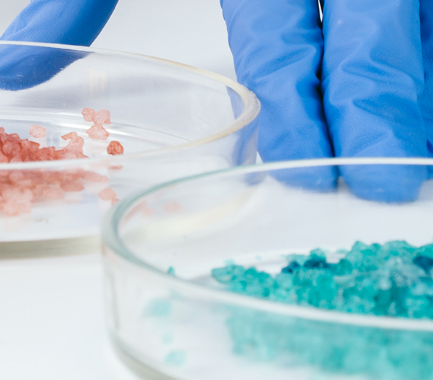Your contact
PENPET-Team - Hamburg

Christoph Meister
Sales
Tel. +49 (0) 40 - 675 7 99 30
sales@penpet.de
Get in touch with us.
Butyl diglycol (BDG)
Butyl diglycol (BDG) is an organic compound from the ether group of substances, which is important for the chemical industry, primarily as a solvent for varnishes, paints, coatings, soaps and oils. In addition, it is an important raw material for synthesis processes in organic chemistry and is used in textile processing for surface finishing. Butyl diglycol is also used as a service chemical and in household cleaning agents. It is also used as a dispersing agent for vinyl chloride resins, as an extender for brake fluids, as a stabilizing additive in plant protection products and as a base for drilling fluids for fracking to extract natural gas. In aircraft fuels, the substance is used as an antifreeze. In large-scale processes, the compound is obtained from the reaction of n-butanol and ethylene oxide with alkaline catalysis.
At PENPET you can easily order the required amount of butyl diglycol (BDG). We look forward to receiving your inquiry for an individual offer. Delivered as a liquid in ISO tank containers or in IBCs.
CAS no. 112-34-5
EINECS no. 203-961-6
Molecular formula: C8H18O3
Synonyms: Butyl Diglycol, Diethylene Glycol Monobutyl Ether, Diethylene Glycol Monobutyl Ether, Diethylene Glycol Butyl Ether, Butoxydiglycol, Butoxydiethylene Glycol, 2-(2-Butoxyethoxy)ethanol, Butyl Carbitol, DEG Monobutyl Ether, DEGBE, BDG
Areas of application: Starting material for the production of organic compounds for the chemical industry, use as a cleaning agent, industrial chemical, dispersing agent, solvent for coatings, paints and varnishes, component of fracking fluids and as an additive for plant protection products
More Information
Butyl diglycol (BDG) is a double ether that also has a terminal hydroxy group and therefore alcoholic properties. Its structure is expressed in the alternative and more accurate name 2-(2-butoxyethoxy)ethanol. The substance consists of a buthoxy group, an ethoxy group and an ethanol group, which are connected in this order by two ether groups.
Butyl diglycol (BDG) is a clear, colorless liquid. The compound has a pleasant, mild odor. It is not volatile and has a high boiling point. Butyl diglycol enters the gas phase at a temperature of 231 °C. It is also very cold-resistant and only freezes at -68 °C. The substance is completely miscible with water and also readily soluble in many organic solvents such as acetone, ethanol, carbon tetrachloride, diethyl ether and benzene.
Butyl diglycol (BDG) is a chemically very stable compound, which, like many ethers, is comparatively inert and is also extremely volatile. However, the substance can form explosive peroxides in air, especially when exposed to light, and must be stored in an airtight and dry place. Butyldigkylol should also be kept away from strong oxidizing agents and strong bases. Since dangerous reactions are possible with aluminum, containers made of other materials should be selected for storing the substance.
Butyl diglycol is a flammable substance which, although difficult to ignite under normal conditions, has an increasing tendency to self-ignite when heated to temperatures above 200 °C. Combustion and thermal decomposition of the substance result in the formation of pungent and irritating substances. This also releases harmful substances such as carbon dioxide and carbon monoxide. Appropriate occupational health and safety measures must be observed.
Butyl digkylene (BDG) is considered a substance with low toxicity for acute and chronic exposure. However, the compound can irritate the skin, eyes and mucous membranes. Direct contact with the substance can cause temporary irritation and reddening of the skin. In the eye, large amounts of butyldigkylene can cause permanent and irreversible damage to the cornea and impairment of vision. Affected areas of the body should be flushed immediately with water to dilute and remove the compound from the affected area. Medical treatment is then required.
Inhalation of the compound or its aerosols may cause irritation of the mucous membranes of the mouth and throat, difficulty breathing and, in high concentrations, central nervous system disorders. Affected persons must be exposed to fresh air immediately and examined by a doctor. After swallowing the substance, dizziness, drowsiness, drunkenness and gastrointestinal symptoms such as diarrhea and stomach pains sometimes occur. If you have symptoms, seek medical help immediately after rinsing your mouth out thoroughly and drinking plenty of water.
With regard to possible damage to aquatic organisms, the compound was classified as slightly hazardous to water. It must not be allowed to escape into sewage, soil or open water. Any release of butyl diglycol into the environment must be reported to the responsible authorities. There are no special transport regulations for the substance.
